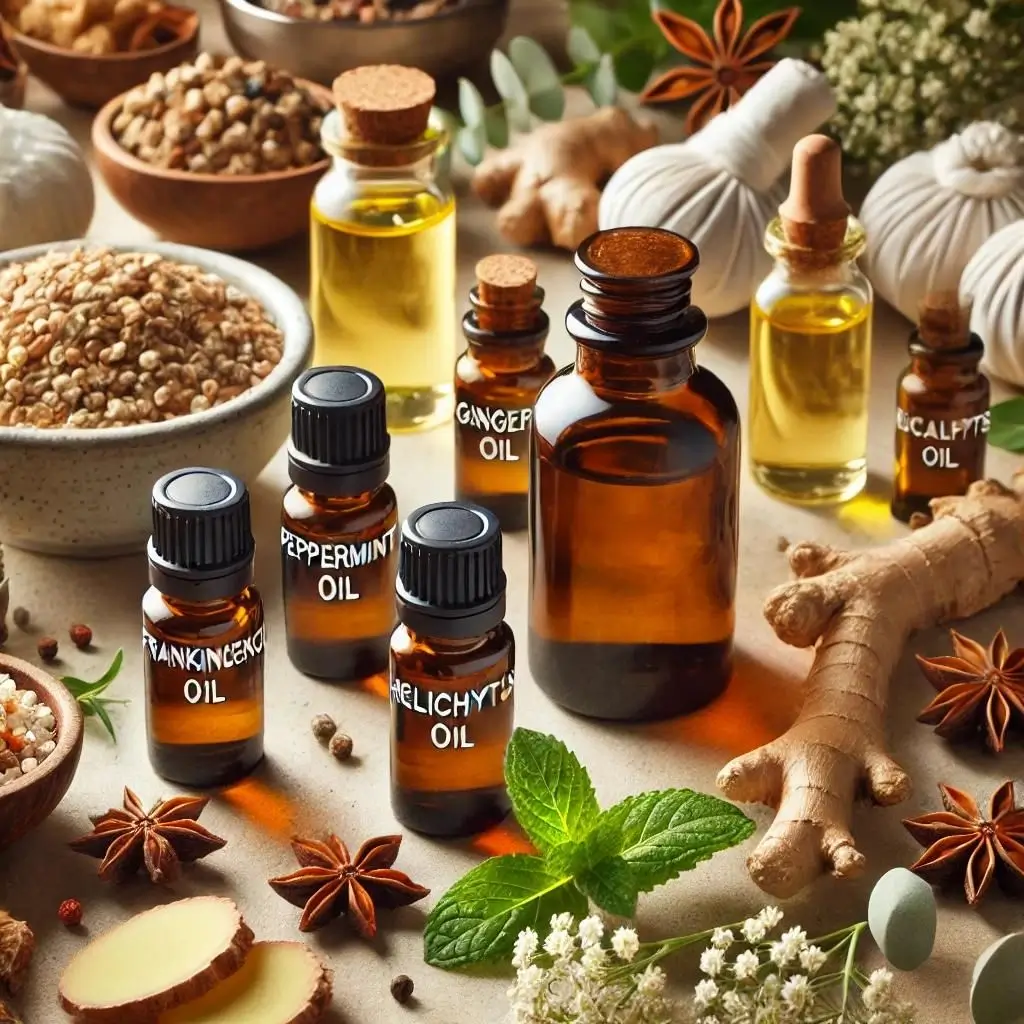Bone spurs, or osteophytes, are bony projections that develop along the edges of bones, often in joints. These growths can cause pain and discomfort, impacting mobility and quality of life. While medical treatments are available, many people seek natural remedies to alleviate symptoms. Essential oils, known for their anti-inflammatory and pain-relieving properties, are a popular choice for managing bone spurs. This guide will explore the use of essential oils for bone spurs, answering common questions and providing practical advice.
What is a bone spur?
Bone spurs, or osteophytes, are smooth, bony growths that form on the edges of bones. They often occur in joints, such as the knees, hips, spine, shoulders, and hands, but can also form on the feet, particularly the heels. Bone spurs develop due to prolonged pressure, friction, or inflammation in the affected area, often as a result of conditions like osteoarthritis, plantar fasciitis, or spinal stenosis.
Symptoms of bone spurs include:
- Pain and discomfort around the affected joint
- Swelling and inflammation
- Stiffness and reduced range of motion
- Numbness or tingling if the spur presses on nerves
Bone spurs themselves are not always painful, but they can cause significant discomfort if they interfere with surrounding tissues or nerves.

Can essential oils help with bone spurs?
Essential oils may help manage the symptoms of bone spurs, primarily through their anti-inflammatory and analgesic properties. While they cannot remove bone spurs, they can provide relief from pain, reduce inflammation, and improve mobility. Some essential oils are known for their benefits in musculoskeletal conditions, making them a natural option for those seeking alternative treatments.
Benefits of using essential oils for bone spurs:
- Reduction in pain and discomfort
- Decreased inflammation and swelling
- Improved blood circulation
- Enhanced relaxation and stress relief
However, it is important to note that essential oils should be used as a complementary therapy, not as a substitute for medical treatment.
How do you use essential oils for bone spurs?
Using essential oils for bone spurs involves topical application, which allows the active compounds to penetrate the skin and target the affected area. Here are the steps to use essential oils effectively:
- Dilute the essential oil: Essential oils are highly concentrated and should be diluted with a carrier oil, such as coconut oil, jojoba oil, or almond oil. A common dilution ratio is 3-5 drops of essential oil per teaspoon of carrier oil.
- Apply the mixture: Gently massage the diluted essential oil onto the area around the bone spur. Use circular motions to enhance absorption and stimulate blood flow.
- Use regularly: For best results, apply the essential oil mixture 2-3 times daily.
- Combine with heat therapy: After applying the oil, use a warm compress to further relax the muscles and improve circulation.
Recommended dilution ratios:
| Essential Oil | Carrier Oil | Drops of Essential Oil |
|---|---|---|
| Lavender | Coconut | 3-5 |
| Peppermint | Jojoba | 2-4 |
| Eucalyptus | Almond | 3-5 |
Which essential oils are best for bone spurs?
Several essential oils are particularly effective for managing the symptoms of bone spurs. These oils have anti-inflammatory, analgesic, and soothing properties that can provide relief.
- Lavender Oil: Known for its calming and pain-relieving effects, lavender oil can reduce inflammation and promote relaxation.
- Peppermint Oil: Contains menthol, which provides a cooling sensation and relieves pain.
- Eucalyptus Oil: Has anti-inflammatory and analgesic properties, making it ideal for reducing swelling and discomfort.
- Frankincense Oil: Known for its powerful anti-inflammatory effects, it can help reduce pain and improve mobility.
- Ginger Oil: Contains compounds that inhibit inflammation and provide pain relief.
Using a combination of these oils can enhance their therapeutic effects.
Are there any risks or side effects of using essential oils for bone spurs?
While essential oils are generally safe when used properly, there are some potential risks and side effects to be aware of:
- Skin irritation: Essential oils can cause skin irritation or allergic reactions, especially if not properly diluted.
- Sensitivity: Some individuals may be sensitive to certain oils, resulting in discomfort or adverse reactions.
- Interactions with medications: Essential oils can interact with certain medications, so it’s important to consult with a healthcare provider before use.
Safety tips:
- Always perform a patch test before applying a new essential oil to a larger area.
- Use essential oils in recommended dilutions to avoid irritation.
- Consult with a healthcare professional if you are pregnant, nursing, or have underlying health conditions.
How long does it take to see results from using essential oils for bone spurs?
The time it takes to see results from using essential oils for bone spurs can vary depending on several factors, including the severity of the condition, the type of essential oils used, and individual response to treatment. Generally, consistent application over a period of weeks is necessary to observe significant improvements.
Typical timeline:
| Week | Expected Results |
|---|---|
| 1-2 | Initial reduction in pain and slight decrease in inflammation |
| 3-4 | Noticeable improvement in mobility and further reduction in swelling |
| 5-6 | Continued relief from symptoms and enhanced comfort |
It’s important to remain patient and consistent with the application to achieve the best results.
Can you combine essential oils with other treatments for bone spurs?
Yes, combining essential oils with other treatments can enhance their effectiveness and provide comprehensive relief from bone spur symptoms. Integrative approaches often yield better results.
Complementary treatments include:
- Physical therapy: Helps improve mobility and strengthen surrounding muscles.
- Stretching exercises: Reduces tension and promotes flexibility.
- Heat and cold therapy: Alleviates pain and reduces inflammation.
- Over-the-counter pain relievers: Provides additional pain relief when necessary.
Combination strategy:
| Treatment | Method | Frequency |
|---|---|---|
| Essential Oils | Topical application | 2-3 times daily |
| Physical Therapy | Guided exercises and stretches | 2-3 times weekly |
| Heat/Cold Therapy | Alternating hot/cold packs | As needed |
How often should you apply essential oils for bone spurs?
For optimal results, it is recommended to apply essential oils 2-3 times daily. Consistency is key to achieving and maintaining symptom relief.
Application schedule:
| Time of Day | Activity |
|---|---|
| Morning | Apply oil after showering |
| Afternoon | Reapply during mid-day |
| Evening | Apply before bedtime |
Following a regular application schedule can help ensure continuous relief and prevent symptoms from worsening.
Can essential oils prevent bone spurs?
While essential oils cannot prevent the formation of bone spurs, they can play a role in managing the factors that contribute to their development. By reducing inflammation and maintaining joint health, essential oils may help minimize the risk of conditions that lead to bone spurs.
Preventive measures:
- Maintain a healthy weight: Reduces stress on joints.
- Regular exercise: Keeps joints flexible and strengthens muscles.
- Healthy diet: Supports overall joint health.
Using essential oils as part of a holistic approach to health can contribute to better joint care and potentially lower the risk of developing bone spurs.
What other natural remedies can help with bone spurs?
In addition to essential oils, several other natural remedies can provide relief from bone spur symptoms:
- Turmeric: Contains curcumin, which has powerful anti-inflammatory properties.
- Apple cider vinegar: May help dissolve bone spurs and reduce pain.
- Epsom salt baths: Relieves pain and reduces inflammation.
- Ginger: Acts as a natural anti-inflammatory agent.
Natural remedy comparison:
| Remedy | Benefits | How to Use |
|---|---|---|
| Turmeric | Anti-inflammatory, pain relief | Add to meals or take as a supplement |
| Apple Cider Vinegar | Dissolves bone spurs, reduces pain | Mix with water and drink daily |
| Epsom Salt Baths | Pain relief, reduces inflammation | Soak in a warm bath with Epsom salt |
| Ginger | Anti-inflammatory, improves circulation | Consume fresh or as a tea |
Combining these remedies with essential oils can provide comprehensive relief and support overall joint health.
Conclusion
Using essential oils for bone spurs can be an effective way to manage pain and inflammation naturally. While they cannot eliminate bone spurs, they offer significant relief from symptoms and can be part of a holistic approach to joint health. Combining essential oils with other natural remedies and treatments can enhance their benefits and improve overall well-being. Remember to consult with a healthcare provider before starting any new treatment, especially if you have underlying health conditions or are taking medications.



